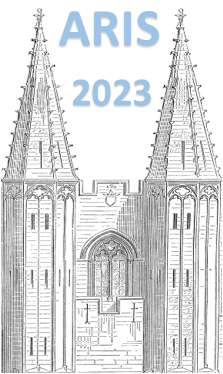Orateur
Description
We present results of a laser spectroscopy experiment on the hyperfine splitting of hydrogen-like $^{208}$Bi$^{82+}$ at the Experimental Storage Ring (ESR) at the GSI Helmholtzzentrum für Schwerionenforschung in Darmstadt. This is the first time that an artificially produced isotope is successfully targeted by laser spectroscopy in a storage ring.
During the campaign in May 2022, the ions of the radioactive isotope were produced in-flight before injection into the ESR. After isotope separation, a few 10$^{5}$ $^{208}$Bi$^{82+}$-ions were stored with β = 0.72 (E$_\mathrm{ion}$ = 408$\,$MeV/u). To excite the hyperfine transition ($\lambda_0$ = 221$\,$nm) the ion beam was superimposed with a counterpropagating beam of a pulsed dye laser at $\lambda_\mathrm{lab}$ = 548$\,$nm. Fluorescence detection was realized spatially separated from the laser interaction with a new detection region to obtain the required low background.
The result is compared to the theoretical and semi-empirical predictions in [1]. It will later be combined with a measurement on lithium-like $^{208}$Bi$^{80+}$, which is in preparation, to provide the so-called specific difference between the two hyperfine splittings [2,3]. This will constitute the most stringent test of QED in strong magnetic fields.
[1]: S. Schmidt, et al., Phys. Lett. B, 779, 324 (2018).
[2]: V. M. Shabaev, et al., Phys. Rev. Lett. 86, 3959 (2001).
[3]: Ullmann et al., Nat. Comm., 8, 15484 (2017).
Funding by BMBF under contract 05P21RDFA1 is acknowledged.

